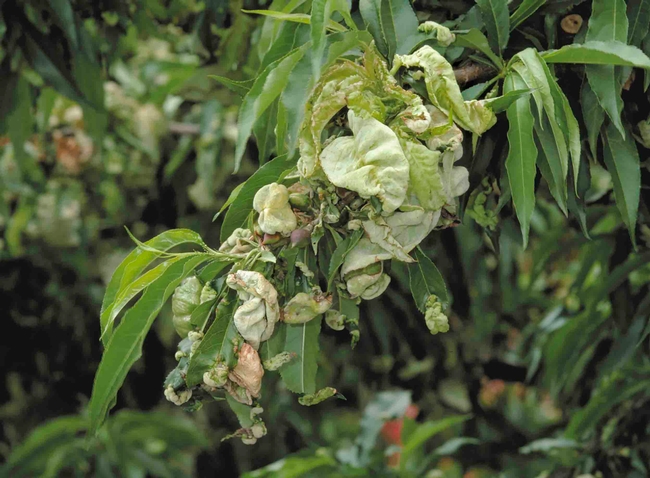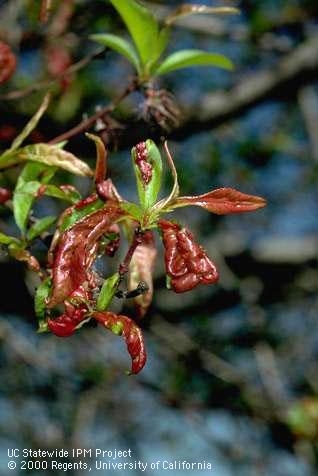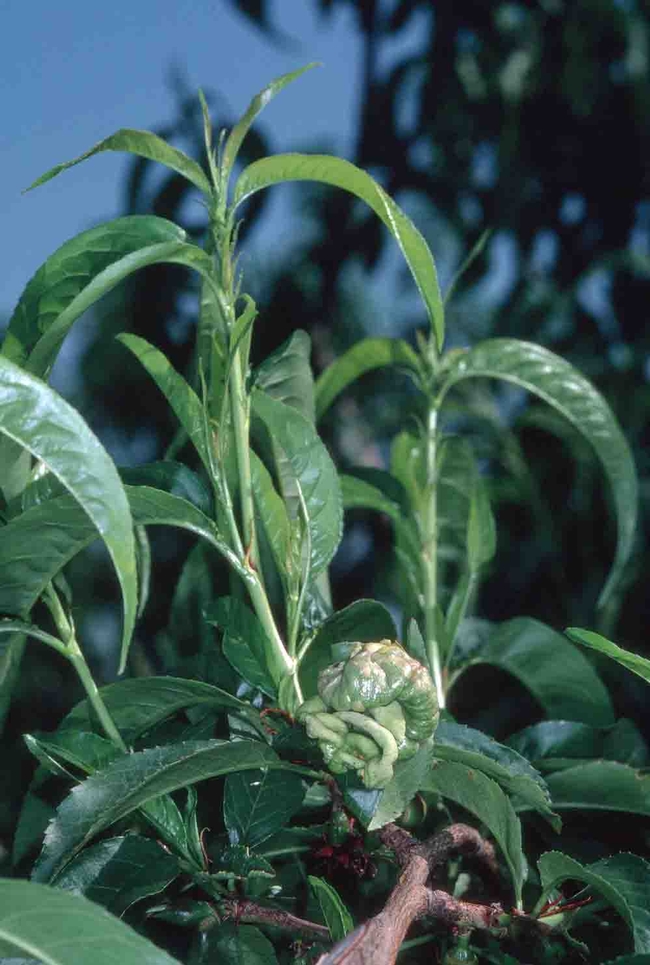If you have peach or nectarine trees, winter is the time to spray them to prevent peach leaf curl.
Peach leaf curl, Jack Kelly Clark, UC ANR
Peach leaves puckered and distorted from peach leaf curl, UC Regents
The best way to avoid leaf curl is to use resistant varieties of peaches and nectarines. Resistant peach varieties include Frost, Indian Free, Muir and Q-1-8. Although the Frost peach variety is very resistant to leaf curl, it must receive fungicide applications its first two to three years of growth. Redhaven peach and most of the varieties derived from it are rated “tolerant” to leaf curl. On the other hand, Redskin peach and its cultivars are rated “susceptible to highly susceptible” to the disease. Kreibich is a nectarine variety that is resistant to leaf curl.
Peach leaves distorted and blistered by peach leaf curl, Jack Kelly Clark, UC IPM
The most common fungicides available to the home gardener contain fixed copper. The active ingredient, copper, is listed as “metallic copper equivalent,” or MCE. The higher the MCE, the more effective the product will be. Thorough coverage (by spraying the trees until they are dripping) is essential for disease control. Be aware that repeated use of copper products can result in the buildup of copper in the soil, where it may be become toxic to soil organisms. The synthetic fungicide, chlorothalonil, is the only non-copper fungicide available for managing leaf curl on backyard trees. When using pesticides, always read and follow the label for usage, rates, toxicity and proper disposal. Proper protective clothing and gear (including goggles) should be used when handling any pesticides.
Peach leaves deformed by peach leaf curl, Jack Kelly Clark, UC IPM Program
For more detailed information on this topic, see the University of California Integrated Pest Management (UC IPM) Pestnote #7426, Peach Leaf Curl.
UC Master Gardeners of Butte County are part of the University of California Cooperative Extension (UCCE) system. To learn more about us and our upcoming events, and for help with gardening in our area, visit our website. If you have a gardening question or problem, email the Hotline at mgbutte@ucanr.edu (preferred) or call (530) 538-7201.



